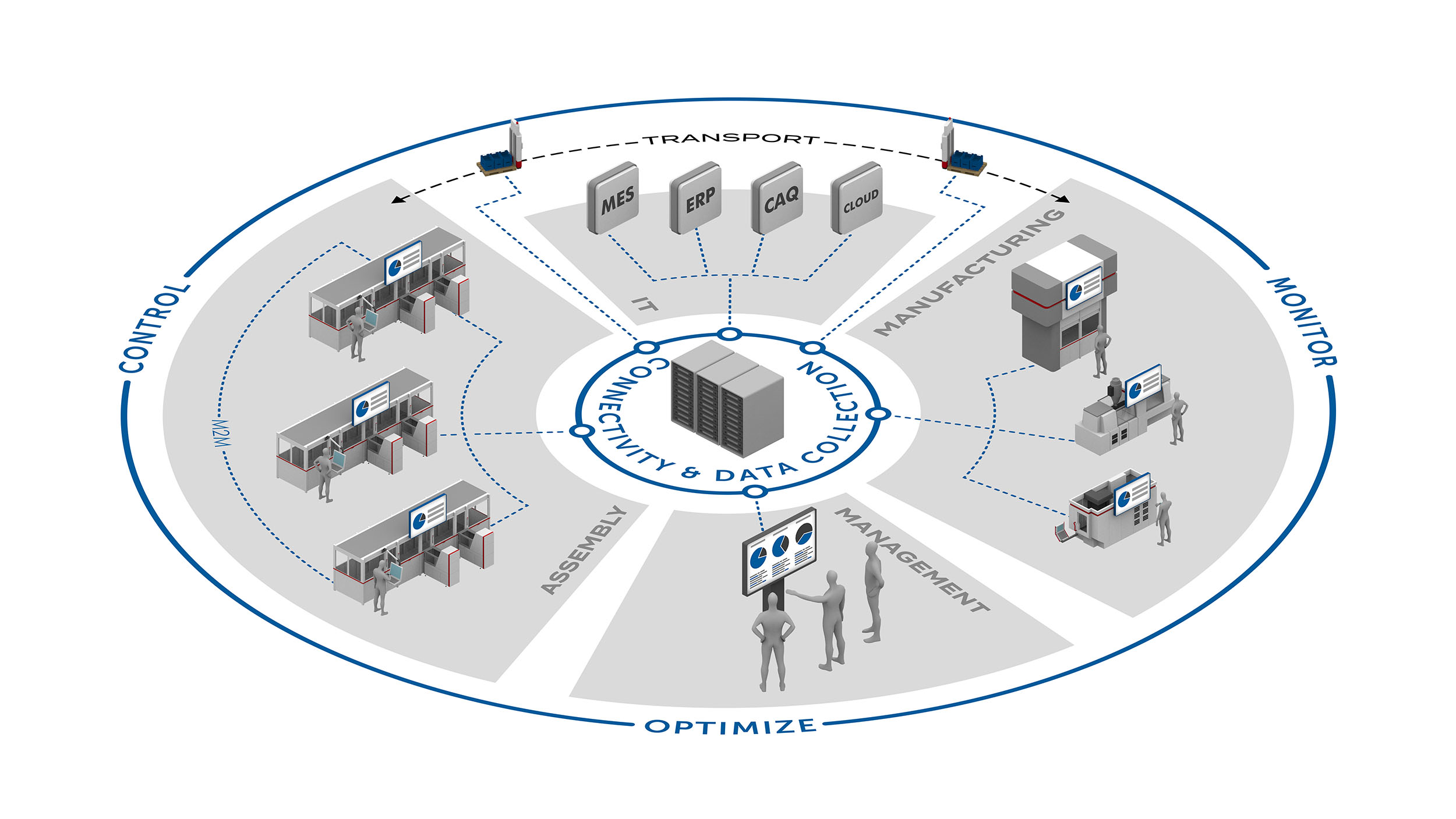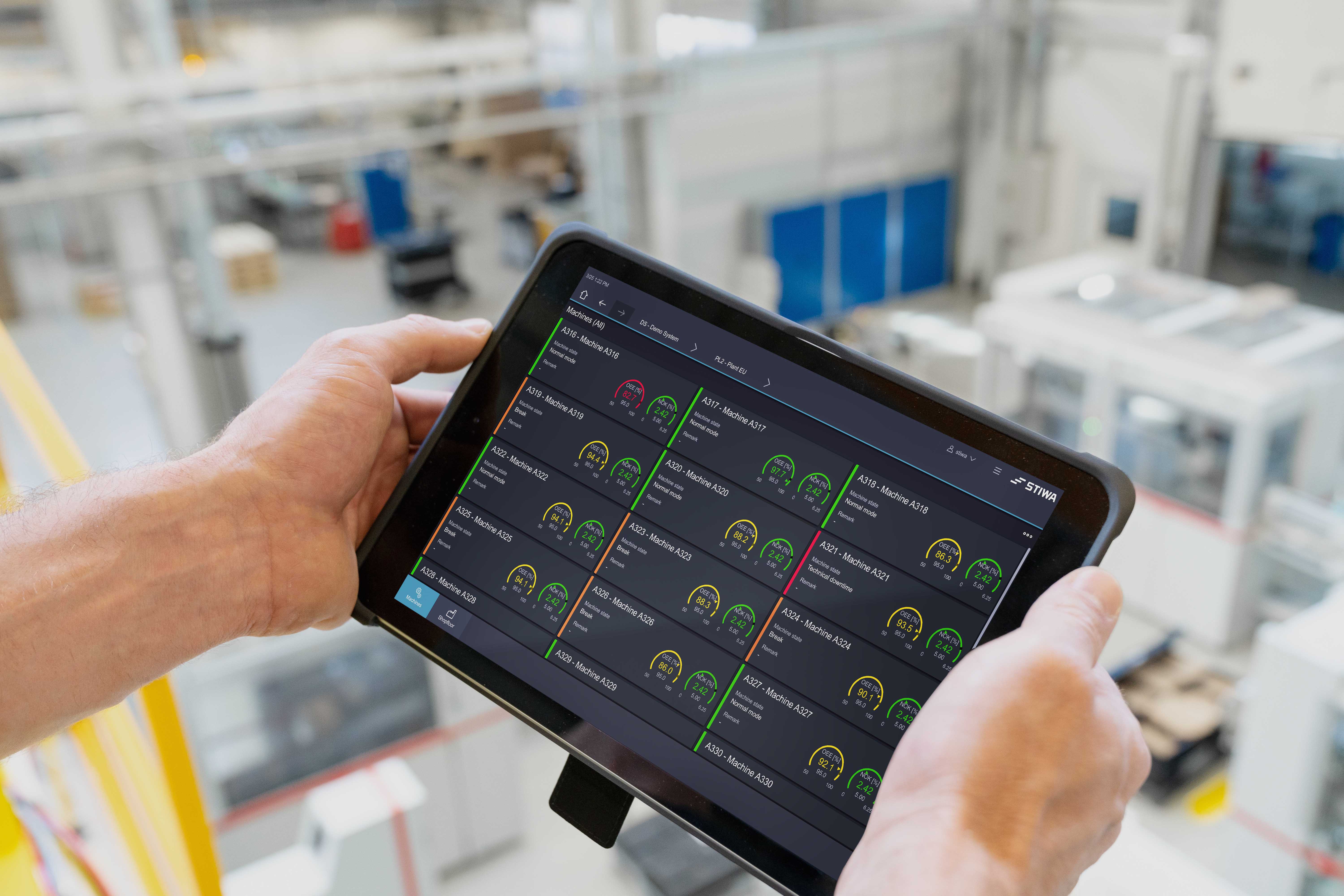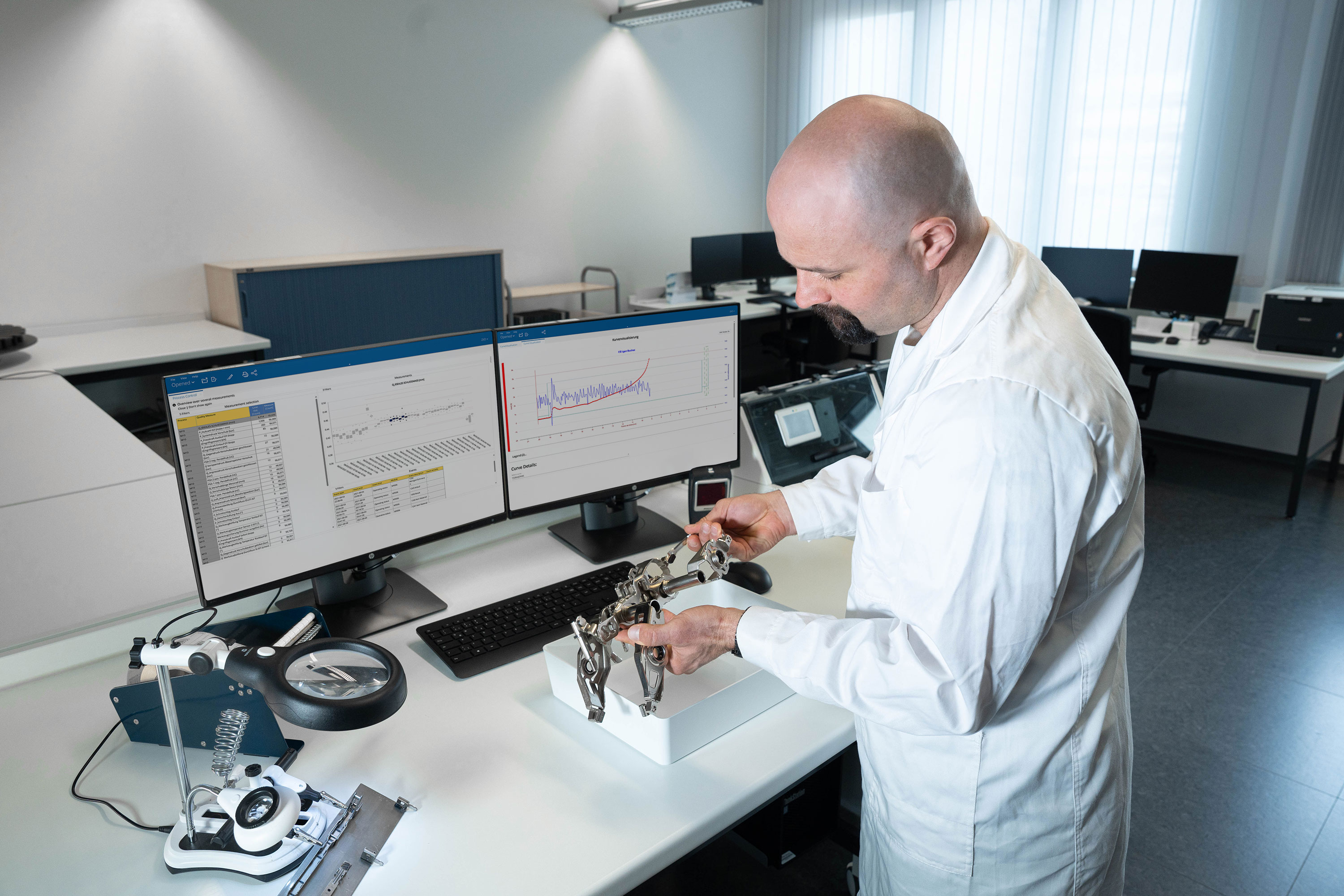Artificial intelligence in laboratory processes
Since 20 years STIWA concerns itself with the digitalization of medical laboratory processes, so it can continue optimizing processes and minimize mistakes.
Sticking to the same routine every day may feel safe, but it won’t drive improvement. Lay the foundation for smarter production, empowering better, data-driven decisions.
Unlock the potential of your production with real-time insights, automated data collection, and seamless integration into your existing IT systems. Streamline operations and reduce standstills with standardized KPIs and intelligent tools that empower smarter, faster decision-making—helping you drive profitability and achieve greater operational efficiency.
Book a Free Expert Ms Teams Call
Higher OK Output
Lower Reject Rate
Faster Production Ramp-Up
Improved Efficiency
Faster ramp-up, reduced maintenance.
Increased Output
More OK parts, fewer defects.
Cost Savings
Automation reduces waste and standstills.
Better Decision-Making
Real-time data and transparency.
Fast Response
Quickly identify and fix production issues.
Expert Support
Guidance throughout the machine lifecycle.
Scalability
Systems that grow with your needs.
Cyber Security
Secure machine communication.
Future-Proof
Integration with AI and data science tools.
Real-time data insights reduce reliance on manual troubleshooting, minimizing effort and supporting all levels of expertise—resulting in smooth operations, smarter decisions, and consistent output.




With standardized interfaces, ensure bidirectional communication between your systems. How much longer can you afford to let inefficiencies hold you back?
Stay informed with real-time insights into your production processes. Are you fully aware of what's happening on your shopfloor?
Quickly identify and address losses, deviations, and production fluctuations. How fast can you respond to production challenges with your current tools?
Take full command of your machine and production lines with a single, centralized user interface. Is your production ready for complete control?
We understand this frustration—because we’ve faced it too. That’s why we’ve developed tools to eliminate the guesswork. With real-time insights, you can take control of your production, resolve issues faster, and make confident, data-driven decisions that drive real results.
performance inefficiencies, data visibility challenges, or the lack of actionable data, enabling smoother operations and better outcomes.
Since 20 years STIWA concerns itself with the digitalization of medical laboratory processes, so it can continue optimizing processes and minimize mistakes.
For 20 years, STIWA has been working on the digitalisation of medical laboratory processes in order to further optimise procedures and minimise errors. However, standard algorithms cannot eliminate all sources of error. Particularly in the area of laboratory orders, manual post-processing is still required for around 10% of the data. STIWA now wants to close this gap with the help of artificial intelligence.
One important customer of STIWA laboratory automation is SYNLAB, Europe's leading provider of medical diagnostic services. "In the German market alone, we currently process around 500,000 laboratory orders per week for SYNLAB. Experience shows that many order forms are still forwarded analogously from doctors to laboratories. This will not change in the next few years. It is also challenging that every hospital, every doctor can use his or her own form. This means that around 6,000 different application variants flow into our digitisation software - with a correspondingly high potential for error sources," outlines Roland Wingelhofer, Business Unit Manager STIWA Laboratory Automation. At the latest, high expenses arise during billing due to incorrect insurance numbers or wrongly prescribed analyses. "Apart from the financial aspect, however, it is above all central that all analysis procedures that are important for the patient can be clearly marked and carried out accordingly," says Wingelhofer.
Optimising data recognition
With the help of optical recognition processes such as OCR and OMR, the data are read in. In the meantime, the processes have been optimised to such an extent that about 90 % of these applications are accepted flawlessly. "For the remaining 10 %, however, we come up against limits with standard algorithms. For example, even optimised digitisation software like ours cannot always read out the data completely due to printer errors, illegible fonts or position errors," explains Stefan Pühringer, Product Manager STIWA Laboratory Automation. These errors are currently being reworked by laboratory staff.
AI in laboratory automation
In the future, artificial intelligence will take the place of manual post-processing: "AI can recognise an incorrect input using its own algorithms and, for example, independently expand bounding boxes to be able to read content outside the standardised text fields. AI can also be used successfully in the secure recognition of signatures. The goal is to reduce rework to a minimum and thus also to further reduce the throughput time of samples in the laboratory process," says Pühringer.
Reeds research project
Within the framework of "Reeds", STIWA Laboratory Automation is working together with the SCCH, Software Competence Centre, on the integration of artificial intelligence into the laboratory process. This does not involve real data but transfer learning models, i.e. data from other problems. "We are also cooperating with SYNLAB in this project. In this way, we ensure that the results from the research project are immediately applied in real life. We want to be ready for the market by next year," says Wingelhofer.
Developed by manufacturers with decades of hands-on production experience, this adaptable and scalable software delivers transparency, reduces costs, and supports global standardization—all while maintaining high product quality. Built by experts who truly understand your industry challenges, ensuring it adapts to your needs at any stage.
STIWA Shopfloor Software goes beyond traditional MES solutions by working directly at the machine and control level. It can read PLC data in real time without requiring middleware. This deep integration ensures high-quality data acquisition without delays, making it ideal for analysis and optimization.
Advantage: Customers get a detailed and real-time data foundation, enabling precise production control, error analysis, and process improvements.
STIWA doesn't just focus on visualizing production data; it leverages Artificial Intelligence (AI) and Machine Learning to provide deep insights. The software automatically detects anomalies, bottlenecks, and optimization opportunities, offering actionable recommendations.
Example: AI can predict machine failures, reduce rework defect rates by up to 30%, and adaptively optimize processes.
Advantage: Customers can increase productivity, minimize downtime, and reduce costs through data-driven optimization.
The software is highly flexible and can be integrated into existing production lines (Brown-Field) as well as new, highly connected manufacturing setups (Green-Field). Its modular architecture allows seamless connection to ERP, MES, CAQ, or machine control systems.
Example: Older machines without modern IT interfaces can be integrated via retrofit solutions or IoT adapters, while highly automated systems communicate natively with the software.
Advantage: Companies can digitize step by step without large investments in new machinery while benefiting from modern analysis and optimization tools.
STIWA Shopfloor Software is modular in design, allowing it to adapt to different company sizes and requirements—from single machines to complex, globally connected production networks. Companies can start with selected modules and gradually expand the solution without the need to replace the entire system.
Example: A customer can initially implement real-time monitoring and later add AI-driven optimization or predictive maintenance without requiring a system overhaul.
Advantage: The software grows with business needs, ensuring investment security and keeping companies technologically up to date with continuous advancements.
Since 20 years STIWA concerns itself with the digitalization of medical laboratory processes, so it can continue optimizing processes and minimize mistakes.
For 20 years, STIWA has been working on the digitalisation of medical laboratory processes in order to further optimise procedures and minimise errors. However, standard algorithms cannot eliminate all sources of error. Particularly in the area of laboratory orders, manual post-processing is still required for around 10% of the data. STIWA now wants to close this gap with the help of artificial intelligence.
One important customer of STIWA laboratory automation is SYNLAB, Europe's leading provider of medical diagnostic services. "In the German market alone, we currently process around 500,000 laboratory orders per week for SYNLAB. Experience shows that many order forms are still forwarded analogously from doctors to laboratories. This will not change in the next few years. It is also challenging that every hospital, every doctor can use his or her own form. This means that around 6,000 different application variants flow into our digitisation software - with a correspondingly high potential for error sources," outlines Roland Wingelhofer, Business Unit Manager STIWA Laboratory Automation. At the latest, high expenses arise during billing due to incorrect insurance numbers or wrongly prescribed analyses. "Apart from the financial aspect, however, it is above all central that all analysis procedures that are important for the patient can be clearly marked and carried out accordingly," says Wingelhofer.
Optimising data recognition
With the help of optical recognition processes such as OCR and OMR, the data are read in. In the meantime, the processes have been optimised to such an extent that about 90 % of these applications are accepted flawlessly. "For the remaining 10 %, however, we come up against limits with standard algorithms. For example, even optimised digitisation software like ours cannot always read out the data completely due to printer errors, illegible fonts or position errors," explains Stefan Pühringer, Product Manager STIWA Laboratory Automation. These errors are currently being reworked by laboratory staff.
AI in laboratory automation
In the future, artificial intelligence will take the place of manual post-processing: "AI can recognise an incorrect input using its own algorithms and, for example, independently expand bounding boxes to be able to read content outside the standardised text fields. AI can also be used successfully in the secure recognition of signatures. The goal is to reduce rework to a minimum and thus also to further reduce the throughput time of samples in the laboratory process," says Pühringer.
Reeds research project
Within the framework of "Reeds", STIWA Laboratory Automation is working together with the SCCH, Software Competence Centre, on the integration of artificial intelligence into the laboratory process. This does not involve real data but transfer learning models, i.e. data from other problems. "We are also cooperating with SYNLAB in this project. In this way, we ensure that the results from the research project are immediately applied in real life. We want to be ready for the market by next year," says Wingelhofer.